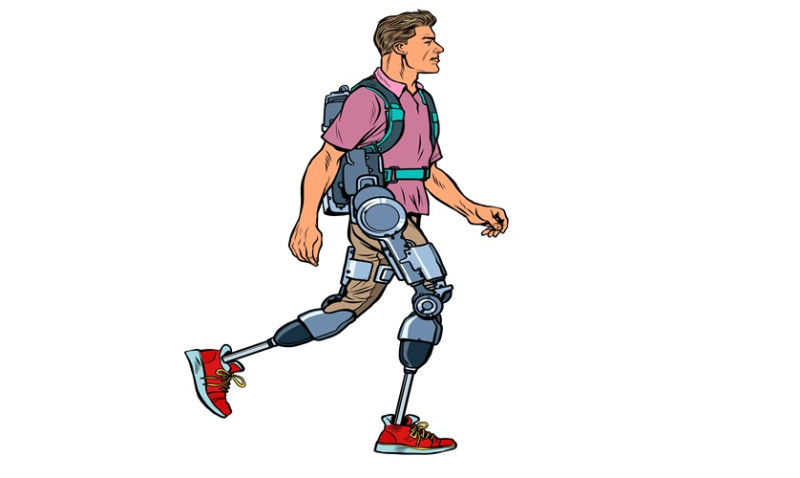
Low back pain and stiffness can strike at any time—whether you're lifting tools on a building site, sitting at a desk working on architectural layouts, or carrying heavy home renovation materials. It’s one of the most common musculoskeletal conditions affecting adults in the UK and can result in significant discomfort, missed workdays, and reduced productivity. But the good news is that early assessment and manual therapy interventions can dramatically improve your recovery, especially when addressed at the onset.
In this blog post, we explore how manual therapy—delivered by trained professionals—provides a fast and effective solution for low back pain and stiffness. Ideal for self-aware DIY enthusiasts, time-strapped professionals, interior designers constantly on their feet, and physically active tradesmen, this guide will give you a deeper understanding of pain relief options and how to spot the signs early.
What Causes Low Back Pain and Stiffness?
Before jumping into treatment, it’s crucial to identify the underlying causes of your discomfort. Low back pain doesn’t have a single origin; rather, it often stems from multiple biomechanical and postural stressors. These causes include:
- Poor lifting techniques while handling tools or heavy objects
- Prolonged sitting with poor posture, common in office and design work
- Overexertion during physically intensive trades like carpentry or tiling
- Lack of proper stretching or warm-up before physical tasks
- Previous injuries that were not fully rehabilitated
Stiffness in the lower back can also stem from inactivity, misalignments, or compensatory movements that put pressure on the lumbar spine and surrounding musculature. Identifying the pain source is the first step in successful treatment.
Benefits of Quick Assessment
Early assessment helps differentiate between mechanical back pain and more complex conditions such as herniated discs or nerve impingements. When pain is assessed quickly—before it becomes chronic—it is usually easier to treat and requires fewer therapy sessions.
Here's what happens during a quick manual therapy assessment:
- A detailed history of your activity levels, posture habits, and previous injuries
- Physical examination to check for muscular imbalances, joint restrictions, or nerve involvement
- Postural and gait analysis, especially useful for those who spend time on ladders, scaffolding, or in static positions
- Functional movement testing to identify limited range of motion or compensation patterns
An effective assessment also includes red flag screening to rule out more serious causes of back pain like infection, fracture, or systemic illness. This ensures that manual therapy is both appropriate and safe for your condition.
How Manual Therapy Works to Alleviate Pain and Improve Mobility
Manual therapy is a hands-on treatment technique delivered by osteopaths, physiotherapists, or chiropractors. It focuses on improving mobility, reducing pain, relaxing tense muscles, and restoring normal joint mechanics. These techniques can be invaluable for professionals who need to stay nimble and active on the job.
The most common manual therapy techniques used for low back pain and stiffness include:
- Joint mobilisations – gentle passive movements to restore normal range of motion
- Spinal manipulations – quick, controlled thrusts to correct joint dysfunction
- Myofascial release – targeting soft tissues to reduce tension and improve blood flow
- Trigger point therapy – applying pressure to tight muscle knots to release tension
- Soft tissue massage – helping to reduce inflammation and stimulate bodily healing processes
These techniques work best when they are tailored to your specific condition. For example, a roofer might suffer from facet joint irritation due to excessive extension of the spine, whereas an interior designer may present with stiffness from long hours at a computer, requiring a different therapeutic approach.
What to Expect After a Manual Therapy Session
After one or two sessions, many patients report reduced stiffness, greater flexibility, and a decrease in acute discomfort. Better posture and movement patterns can usually be observed within a week if combined with complementary mobility and exercise routines.
A professional therapist may also recommend customised exercises to strengthen core muscles and stretch tight areas, which helps in maintaining results and preventing relapses. Below is a sample table of post-treatment maintenance strategies:
| Activity | Description | Frequency |
|---|---|---|
| Core Strengthening | Planks, bird dogs, bridges to stabilise lower back musculature | 3 times/week |
| Mobility Drills | Cat-Cow stretches, hip rotations, lumbar rolls | Daily (5–10 mins) |
| Postural Correction | Ergonomically adjusting workstations and lifting forms | Ongoing |
| Hydration & Sleep | Promotes faster muscle recovery and reduces inflammation | Daily habits |
Sticking to a routine helps prolong the benefits of therapy, especially for physically demanding professions and lifestyles.
Who Should Consider Manual Therapy?
Manual therapy isn’t just for athletes or those with chronic back issues. It's ideal for anyone experiencing acute or recurrent pain, including:
- DIY enthusiasts undertaking heavy lifting or awkward postures during home projects
- Architects and designers who sit for long periods or work in high-pressure environments
- Professionals juggling remote workstations with poor ergonomics
- Tradespeople like plumbers, electricians, and painters doing repetitive labor-intensive tasks
In short, if you're in a profession or hobby that demands physical strain, it’s smart to get your back pain assessed early and treated with targeted hands-on methods.
When to Seek Professional Help
If your low back pain comes with symptoms like radiating leg pain, numbness, muscle weakness, or bowel/bladder dysfunction, it's vital to seek immediate professional advice. These red flags may require a more advanced diagnostic approach such as imaging or specialist referral.
Otherwise, if your back pain is new, comes on after certain activities, or lingers longer than a week, manual therapy may be your best first step.
Conclusion: Restore Comfort Quickly with Hands-On Care
Low back pain and stiffness can affect your quality of life, job performance, and ability to enjoy physical activity. Manual therapy offers a swift, non-invasive solution that addresses underlying causes, not just symptoms—perfect for the hands-on lifestyle of DIYers, designers, and tradespeople alike.
Don’t let back discomfort hold you back. Early assessment and treatment using manual therapy can help you return to work, complete your next project, or simply enjoy a more comfortable day-to-day life without pain.
If you're experiencing symptoms or want preventative support, reach out to a local manual therapist near you in the UK and get your spine—and life—back in alignment.






